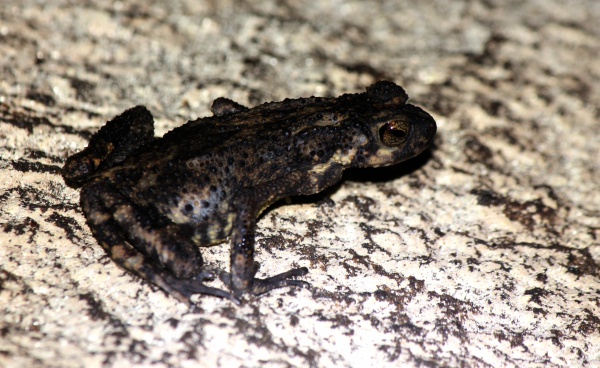Facts About Adenomus kelaartii
Adenomus kelaartii, commonly known as Kelaart's toad, is a diminutive species endemic to Sri Lanka. These toads primarily inhabit the southwestern region of the island, residing at elevations ranging from 30 to 1,230 meters. The species is named after Edward Frederick Kelaart, a distinguished physician and zoologist from colonial Ceylon.
Kelaart's toads are notably small, with females measuring between 36 to 50 mm in length, while males tend to be smaller, ranging from 25 to 33 mm. Their skin texture varies from smooth to spiny and wart-covered. The dorsum of these toads is typically brown, while the ventral side is cream or white, occasionally flecked with red or blue spots.
These toads thrive in tropical humid forests, especially near upland streams. They can also be found in diverse microhabitats, including trees, sandbanks by rivers, rock crevices, decaying logs, and tree holes. They exhibit both diurnal and nocturnal activity. During the breeding season, males vocalize near water bodies. Females lay up to a thousand eggs in a single strand in permanent pools, with the tadpoles metamorphosing into toadlets in approximately seven weeks.
Despite being relatively prevalent within their preferred environments, Kelaart's toad is listed as an endangered species. Their distribution is limited to an area of less than 500 square kilometers. The primary threat to their survival is habitat destruction, largely due to deforestation for agriculture. Conservation efforts are imperative and focus on safeguarding their habitats within designated reserves.

 India
India